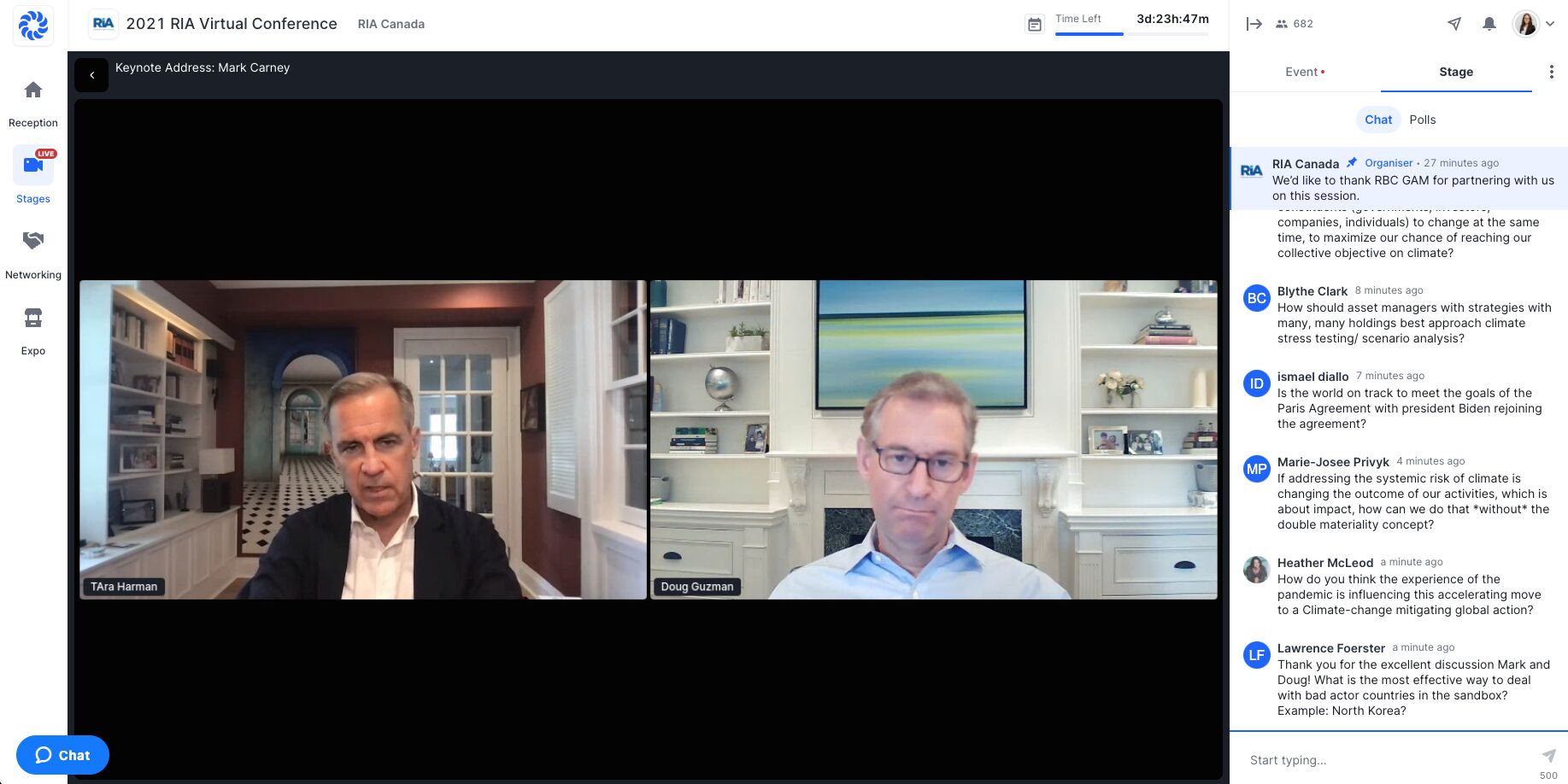
Speakers:
Mark Carney, UN Special Envoy on Climate Action and Finance
Doug Guzman, Group Head, RBC Wealth Management, RBC Insurance RBC Investor & Treasury Services
Mark Carney, UN Special Envoy on Climate Action and Finance and Vice Chair and Head of ESG and Impact Fund Investing at Brookfield Asset Management shared his expertise on the private finance strategy for COP26 during his keynote address.
That strategy, he said, plans to put in place information, tools and markets so that every professional finance decision can take climate change into account.
The four pillars of this strategy are reporting, risk, returns and mobilisation, and he broke them down as follows:
1. Reporting
Information about climate-related risks is essential and starts with metrics and the carbon footprint of an entity, but it also includes risk management governance and a forward look at strategic resilience, Carney said. This is best expressed by the Task Force for Climate-Related Financial Disclosures (TCFD), which was developed by the private sector for the private sector.
These recommendations were delivered to the G20 Leaders Summit three years ago, and have been taken up by a wide range of firms. Over 2000 companies representing over $17 trillion of market cap are currently reporting against the TCFD standards.
Carney said the private sector has taken the TCFD as far as it can and now it’s time for the public sector to make it mandatory to ensure comprehensive, comparable and reliable information within and across jurisdictions.
2. Risk
The second pillar is about developing capabilities in the public and private sectors for managing climate-related risks that are unprecedented in nature. We need to look forward when it comes to risk, but also develop a risk capacity, Carney said.
This is currently being worked on in partnership between various institutions in the public and private sector. In a number of jurisdictions, climate stress tests are being used, testing whether boards and senior management think their strategy is robust enough to withstand different climate scenarios.
3. Returns
The third pillar is about returns and the opportunities that come from addressing and solving existential risks. This can create enormous value and commercial opportunity. The goal is to align the net zero plans of companies with the commitments of the financial sector. These commitments are continuously growing. For instance, over 160 major global financial institutions made commitments to net zero for 2050, with interim targets beforehand, at President Biden’s Leaders Summit on Climate Change in April, Carney said.
4. Mobilization
Mobilization is about developing the missing markets that are necessary for the transition to net zero. Carney highlighted three in particular:
- Global professional deep liquid market for carbon offsets – This is a small market that garners a lot of newspaper headlines. The scale of carbon offset investments is measured in hundreds of millions of dollars, but to make a dent in the transition to net zero, it needs to be measured in the tens of billions of dollars on an annual basis.
- Blended finance – Blended finance leverages public sector money, mainly from the multilateral development banks, with private sector money. The goal is to establish climate resilient infrastructure and climate mitigating structure in emerging and developing economies.
- The protection gap – There is a huge insurance protection gap in the world. On average, extreme weather events are causing around $100 billion in insured losses. On top of that, there is at least $200 billion of annual damage to the built environment in emerging and developing economies and much higher losses from harm caused to economic activity, as well as human suffering. The global insurance industry is now working with the International Money Fund, World Bank, and others to close that gap by developing a series of metrics and information that will help replace this missing market in insurance, and help target scarce funding for resilient infrastructure and targeted aid.
Near the closing of the session, Doug Guzman, Group Head of RBC Wealth Management, RBC Insurance, RBC Investor and Treasury services, asked Carney if he had any final advice for the crowd.
Carney responded that there’s a very basic question we can ask of any country, financial institution or company, and that’s “what’s your plan for net zero?”
